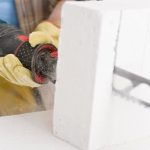Strength and power are vital components of fitness that contribute to overall health and performance. In today’s fast-paced world, finding time to hit the gym can be difficult, but fear not. This article will show you how to improve strength and power at home. With a little creativity and dedication, you can create an effective home gym setup that allows you to achieve your fitness goals without stepping foot outside.
Training at home offers convenience and flexibility, allowing you to work out on your own schedule. Whether you’re a beginner looking to build a foundation of strength or an experienced athlete striving for new personal bests, home-based workouts can help you reach your full potential. By focusing on bodyweight exercises, resistance training with bands and dumbbells, plyometric workouts, and HIIT routines, you can improve both your strength and power levels from the comfort of your own living room.
In addition to exercise, proper nutrition plays a crucial role in enhancing your strength and power gains. Fueling your body with the right nutrients before and after workouts can optimize performance and recovery.
And don’t forget about recovery strategies – rest, sleep, and mobility work are essential for allowing your muscles to repair and grow stronger. By following these guidelines for progressive overload and incorporating smart recovery practices, you’ll be well on your way to achieving your fitness goals with home-based strength and power training.
Setting Up Your Home Gym
Setting up a home gym is an essential step in improving strength and power at home. With the right equipment and space considerations, you can create an effective workout environment that allows you to achieve your fitness goals. Whether you have a dedicated room for your home gym or are working with limited space, there are key factors to consider to make the most out of your training sessions.
Equipment Selection
When setting up your home gym for strength and power training, choosing the right equipment is crucial. Items such as resistance bands, dumbbells, kettlebells, and a stability ball can all be effective tools for building strength and power. Additionally, investing in a pull-up bar, weight bench, and exercise mat can further enhance your workouts. Consider the exercises you plan to incorporate into your routine when selecting equipment to ensure they align with your fitness goals.
Space Considerations
The amount of space available will impact how you set up your home gym for strength and power training. If you have a dedicated room, take advantage of wall-mounted storage solutions to keep equipment organized and maximize floor space. For those with limited space, consider collapsible or adjustable equipment that can be easily stored away when not in use. Ensure there is enough clearance around workout areas to perform exercises safely and effectively without any hindrances.
Creating a Motivating Environment
In addition to selecting the right equipment and considering space limitations, creating a motivating environment in your home gym can enhance your workout experience. Personalize the space with motivational quotes, music playlists, or even a designated workout area that inspires you to push yourself during each session. Keep the area clean and clutter-free to promote focus and dedication to your strength and power training goals.
By carefully selecting equipment, optimizing available space, and creating a motivating environment in your home gym, you can effectively improve strength and power at home. Establishing a well-equipped workout space tailored to your fitness needs will support consistent progress towards achieving your fitness goals through regular strength training sessions.
Bodyweight Exercises for Strength and Power
Bodyweight exercises are a convenient and effective way to improve strength and power at home. These exercises require little to no equipment, making them accessible to anyone looking to enhance their fitness level. Additionally, bodyweight exercises can be modified to accommodate different fitness levels, making them suitable for beginners and advanced athletes alike.
Variety of Bodyweight Exercises
Bodyweight exercises such as push-ups, squats, lunges, and planks engage multiple muscle groups simultaneously, promoting functional strength and power development. One can also incorporate variations of these exercises to target specific muscles or add intensity to the workout routine. For example, adding explosive movements like jump squats or clap push-ups can help improve power output.
Circuit Training With Bodyweight Exercises
Circuit training using bodyweight exercises is an efficient way to build strength and power while keeping the heart rate elevated for cardiovascular benefits. By performing a series of bodyweight exercises back-to-back with minimal rest in between, one can create a challenging workout that targets different muscle groups and improves overall fitness.
Whether it’s completing as many rounds as possible within a set time frame or aiming for a certain number of repetitions for each exercise, circuit training with bodyweight exercises can be tailored to individual fitness goals.
Progression in Bodyweight Training
To continue improving strength and power with bodyweight exercises at home, one must focus on progression. This can be achieved by increasing the number of repetitions, trying more challenging variations of each exercise, or reducing rest periods between sets.
Additionally, incorporating tempo variations (such as slowing down the eccentric phase of a movement) or adding instability (by using tools like stability balls or sliders) can further enhance the effectiveness of bodyweight training. By consistently challenging oneself and tracking progress over time, individuals can see significant improvements in their strength and power levels with bodyweight exercises at home.
Resistance Training
Incorporating resistance training into your home workouts can be a highly effective way to improve strength and power. Whether you are using resistance bands or dumbbells, these tools can provide the necessary challenge to help build muscle and increase overall strength. When choosing the right equipment for your home gym, consider investing in a variety of resistance bands with different levels of tension as well as a set of dumbbells in various weights to allow for progression.
When performing resistance training at home, it is important to focus on proper form and technique to maximize the benefits of each exercise. Start with compound movements such as squats, deadlifts, and rows to target multiple muscle groups simultaneously. Gradually increase the resistance as you become stronger to continually challenge your muscles and promote growth. By consistently incorporating resistance training into your routine, you can see significant improvements in strength and power over time.
To further enhance your strength gains, consider incorporating supersets or circuits into your resistance training workouts. This involves performing two or more exercises back-to-back with minimal rest in between sets. This not only helps to increase the intensity of your workout but also improves muscular endurance and cardiovascular fitness. Experiment with different combinations of exercises using bands and dumbbells to keep your workouts varied and engaging while continuing to work towards improving strength and power at home.
Overall, resistance training with bands and dumbbells can be a convenient and effective way to boost your strength levels from the comfort of your own home. With proper equipment, technique, and consistency in your workouts, you can make significant progress in building muscle mass, increasing overall strength, and enhancing power output.
By incorporating these strategies into your home-based training regimen, you can take control of your fitness journey and achieve impressive results in terms of strength gains and power development.
Plyometric Workouts for Power Development
Plyometric workouts are an effective way to enhance power development at home. These exercises focus on explosive movements that require a quick and forceful contraction of muscles. By incorporating plyometrics into your home workout routine, you can improve your ability to generate strength and speed in various activities such as running, jumping, and sports.
One popular plyometric exercise that can be done at home is the squat jump. To perform this exercise, start in a squat position with your feet shoulder-width apart. Lower yourself into a squat, then explosively jump up as high as you can, landing back in the squat position. Repeat this movement for a set number of repetitions to challenge your lower body muscles and improve power output.
Another effective plyometric exercise for power development is the box jump. Find a sturdy platform or box that is at an appropriate height for your fitness level. Stand in front of the box, bend your knees slightly, and then jump onto the box with both feet.
Land softly on the box in a controlled manner before stepping back down. Box jumps engage multiple muscle groups and help improve explosive strength. Incorporating these plyometric exercises into your home workout routine will contribute to overall strength and power gains.
| Plyometric Exercise | Description |
|---|---|
| Squat Jump | Start in squat position, explosively jump up and land back in squat. |
| Box Jump | Jump onto sturdy platform or box, land softly before stepping down. |
Incorporating HIIT Workouts for Overall Strength and Power
High Intensity Interval Training (HIIT) is a popular and effective workout method that can significantly improve strength and power levels when done correctly. HIIT involves alternating between short bursts of intense exercise followed by brief periods of rest or lower-intensity activity. This type of training not only enhances cardiovascular fitness but also helps build muscle mass, increase endurance, and boost overall athleticism.
When incorporating HIIT workouts into your home training routine for strength and power gains, it is essential to choose exercises that target multiple muscle groups and mimic functional movements. Here are some examples of HIIT exercises you can try at home:
- Burpees
- Mountain climbers
- Jump squats
- High knees
Performing these exercises in quick succession with minimal rest periods can help elevate your heart rate, improve muscular endurance, and increase explosive power. Additionally, incorporating bodyweight movements like push-ups, lunges, and planks into your HIIT workouts can further enhance your strength gains.
To get the most out of your HIIT workouts for overall strength and power development at home, it’s crucial to focus on maintaining proper form throughout each exercise, pushing yourself to reach maximum effort during the high-intensity intervals, and allowing adequate time for recovery between sessions. Consistency is key when it comes to seeing progress in your fitness journey through HIIT training.
By gradually increasing the duration or intensity of your workouts over time, you can continue challenging your muscles and cardiovascular system to adapt and grow stronger.
Incorporating HIIT workouts into your home-based strength training routine can provide a dynamic and efficient way to enhance both physical performance and aesthetics. Remember to listen to your body, stay hydrated, and fuel yourself with nutritious foods to support your energy levels during these intense training sessions. With dedication, perseverance, and smart programming, you can achieve significant improvements in strength and power right from the comfort of your own home.
Nutrition Tips
When it comes to improving strength and power at home, your diet plays a crucial role in supporting your fitness goals. Here are some nutrition tips to help you fuel your body for optimal performance:
1. Prioritize protein intake: Protein is essential for muscle repair and growth, so make sure to include sources of lean protein such as chicken, fish, tofu, lentils, and Greek yogurt in your meals and snacks.
2. Carbohydrates for energy: Carbs are the primary source of fuel for high-intensity workouts, so include complex carbohydrates like whole grains, fruits, and vegetables in your diet to sustain energy levels during training.
3. Don’t forget about fats: Healthy fats from sources like avocados, nuts, seeds, and olive oil are important for hormone regulation and overall health. Include these in moderation to support your strength and power gains.
In addition to focusing on macronutrients, hydration is key for optimal performance. Make sure to drink plenty of water throughout the day, especially before and after workouts. By following these nutrition tips, you can properly fuel your body to improve strength and power at home.
Progressive Overload
One way to incorporate progressive overload into your home workouts is by manipulating variables such as sets, reps, and intensity. For example, you can increase the number of sets or reps you perform for a particular exercise from one workout to the next. Additionally, you can adjust the intensity by using heavier weights if you have access to dumbbells or resistance bands. This gradual increase in workload challenges your muscles and helps stimulate further strength and power gains.
Another effective method to apply progressive overload at home is by changing up your exercises regularly. By introducing new movements or variations of familiar exercises, you can challenge your muscles in different ways and prevent plateauing. For instance, if you’ve been doing standard push-ups, try incorporating decline push-ups or diamond push-ups to target your muscles from varying angles. This variety keeps your workouts engaging and ensures that your muscles continue to adapt and grow over time.
Moreover, tracking your progress is crucial when applying progressive overload at home. Keep a workout journal or use a fitness app to record details of each session, including sets, reps, weights used, and how you felt during the workout.
By monitoring your performance over time, you can identify trends, set new goals, and make necessary adjustments to ensure ongoing improvements in strength and power. Consistent tracking allows you to stay accountable and motivated on your fitness journey toward achieving optimal results.
| Progressive Overload Strategies | Implementation Tips |
|---|---|
| Manipulate sets, reps, and intensity | Gradually increase workload for continuous progress |
| Change up exercises regularly | Introduce new movements for muscle adaptation |
| Track progress consistently | Monitor performance for goal setting and motivation |
Recovery Strategies
Recovery is a crucial aspect of any strength and power training program, especially when done at home. Without proper recovery strategies, progress can be hindered, and the risk of injury increases. One key component of recovery is adequate rest. Make sure to schedule rest days into your workout routine to allow your muscles to repair and grow stronger. Overtraining can lead to fatigue and decreased performance, so listen to your body and give it the time it needs to recover.
In addition to rest, quality sleep plays a significant role in strength and power development. During deep sleep stages, growth hormone is released, which aids in muscle repair and growth. Aim for 7-9 hours of quality sleep each night to optimize your recovery process. If you have trouble falling asleep or staying asleep, consider establishing a bedtime routine or creating a relaxing environment in your bedroom.
Another important aspect of recovery is incorporating mobility work into your routine. Stretching, foam rolling, and other forms of mobility exercises can help reduce muscle tension, improve flexibility, and prevent injuries. Spending just a few minutes each day on mobility work can make a big difference in how you feel during workouts and in everyday life.
Remember that recovery is just as important as the actual training when it comes to improving strength and power at home. By prioritizing rest, sleep, and mobility work, you set yourself up for long-term success in reaching your fitness goals.
Conclusion
In conclusion, home-based strength and power training provide a convenient and effective way to achieve your fitness goals. By setting up a home gym with the necessary equipment and space considerations, you can easily incorporate bodyweight exercises, resistance training using bands and dumbbells, plyometric workouts, and HIIT workouts into your routine. Additionally, focusing on proper nutrition to fuel your body for strength and power gains is crucial in maximizing the benefits of your training.
To continuously improve your strength and power at home, it is important to understand the concept of progressive overload. This means gradually increasing the intensity of your workouts to challenge your muscles and stimulate growth. By implementing a variety of exercises and techniques, such as supersets, drop sets, or increasing weights/resistance over time, you can ensure that you are constantly pushing yourself to new limits.
Moreover, recovery strategies play a vital role in optimal strength and power development. Adequate rest, quality sleep, and incorporating mobility work into your routine are essential for muscle recovery and overall performance.
By taking care of your body both during workouts and in between sessions, you can enhance your results and prevent injuries. With dedication, consistency, and the right approach, achieving your fitness goals through home-based strength and power training is within reach for anyone committed to their health and well-being.
Frequently Asked Questions
How Can I Increase My Body Power at Home?
Increasing your body power at home can be achieved through a combination of strength training exercises, plyometrics, and explosive movements like jumping or sprinting. Incorporating resistance bands, medicine balls, and bodyweight exercises can help improve overall power.
How Can I Build Strength Fast at Home?
Building strength quickly at home requires consistency and challenging your muscles with progressive overload. This means gradually increasing the intensity or weight of your workouts to continue stimulating muscle growth. Focus on compound exercises like squats, deadlifts, and push-ups to target multiple muscle groups simultaneously.
How Can I Increase My Strength and Power?
To increase both strength and power effectively, it is important to have a well-rounded workout routine that includes both resistance training and plyometric exercises. Resistance training helps build muscle strength, while plyometrics focus on explosive movements that enhance power output. Consistency and proper form are key factors in achieving significant improvements in both strength and power levels.

I’m thrilled to have you here as a part of the Remodeling Top community. This is where my journey as an architect and remodeling enthusiast intersects with your passion for transforming houses into dream homes.





